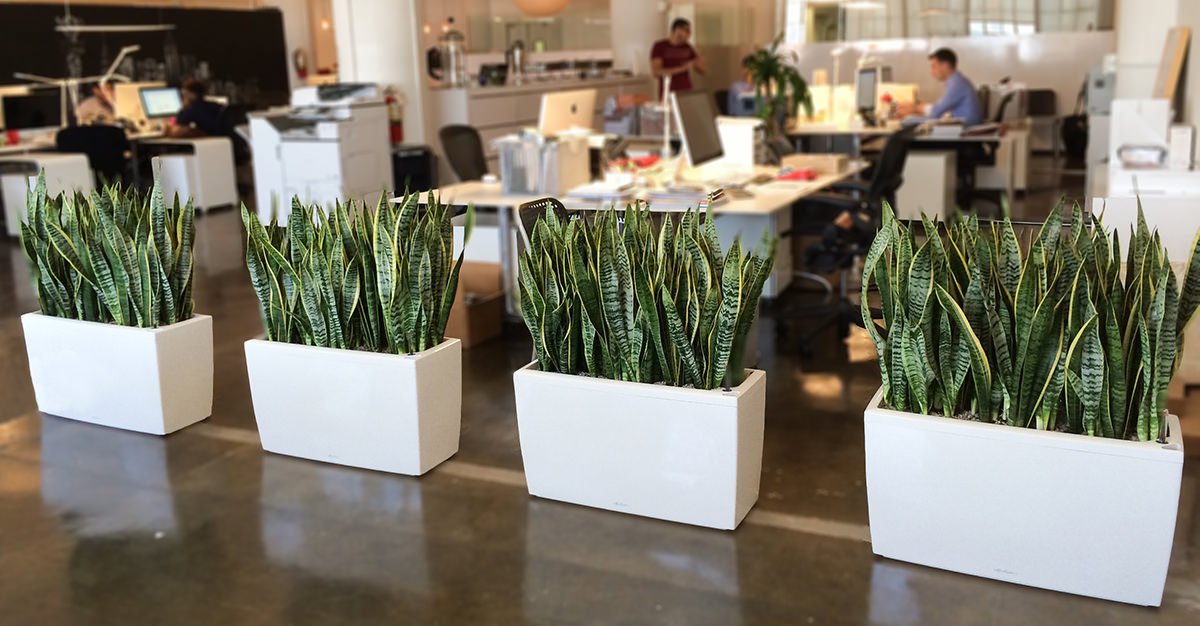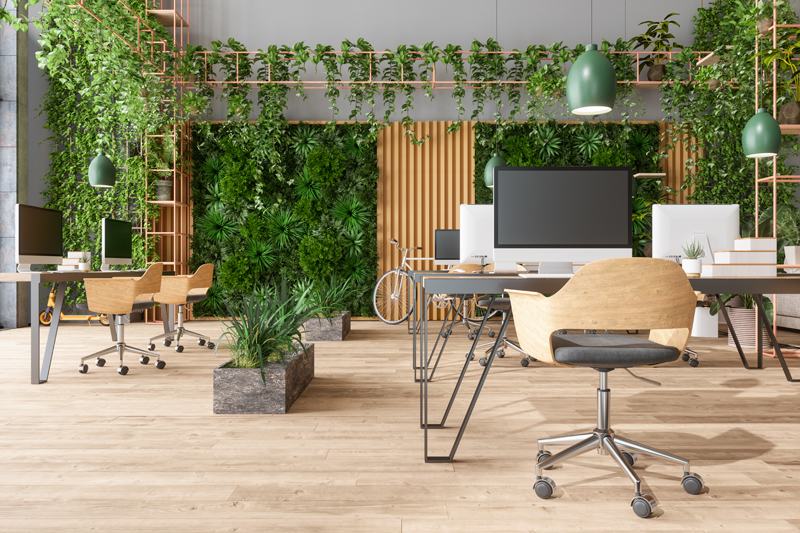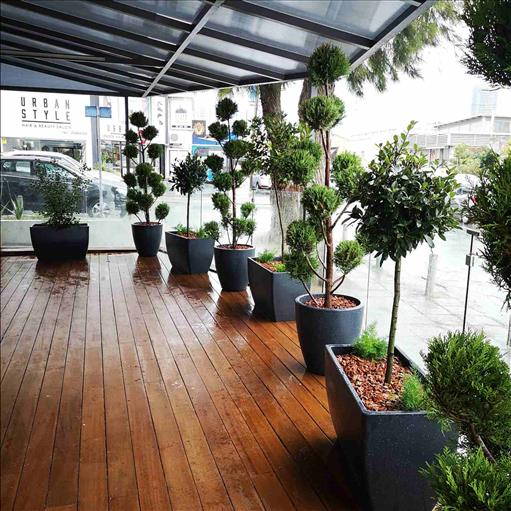In today’s fast-paced work environment, creating a pleasant workspace is essential for both productivity and well-being. One of the most effective ways to achieve this is by incorporating decorative office plants into your office decor. In this article, I’ll share my personal experience with office plants, discuss the benefits they bring, and provide insights on how to choose the right plants for your workspace. Let’s dive in!
The Benefits of Decorative Office Plants
Before we delve into the specifics of plant selection, it’s important to understand why decorative office plants matter. Here are some key benefits:
1. Improved Air Quality
Plants have the remarkable ability to purify the air by absorbing toxins and releasing oxygen. According to a study by NASA, certain houseplants can reduce levels of pollutants such as formaldehyde and benzene. This means that adding plants to your office can lead to a healthier work environment.
2. Enhanced Aesthetic Appeal
Let’s face it: bare office spaces can feel cold and uninviting. Decorative office plants add color, texture, and a touch of nature to any workspace, making it more inviting and enjoyable. Aesthetic appeal can play a significant role in your overall mood and creativity.
3. Boosted Productivity and Creativity
Numerous studies have shown that having plants in your workspace can enhance focus and productivity. A green environment stimulates creativity and helps reduce stress, allowing for a more dynamic workflow.

4. Increased Employee Satisfaction
For business owners, investing in office plants can lead to happier employees. When employees feel comfortable in their environment, job satisfaction increases, which can lead to lower turnover rates.
Choosing the Right Decorative Office Plants
Now that we’ve covered the benefits, let’s explore how to select the best decorative office plants for your workspace. Here’s what to consider:

1. Lighting Conditions
Different plants have varying light requirements. Assess your office’s lighting before making a selection. For offices with low light, consider plants like snake plants or ZZ plants, while bright spaces can accommodate a wider variety.
2. Maintenance Level
If you’re someone who travels frequently or has a busy schedule, low-maintenance plants like succulents or pothos may be more suitable for you. On the other hand, if you enjoy gardening, consider investing time in plants that require more attention.

3. Size and Space
Consider the size of your office and available space for plants. Larger plants can serve as statement pieces, while smaller varieties can thrive on desks. Use the following table as a reference:
| Plant Name | Light Requirement | Maintenance Level | Ideal Space |
|---|---|---|---|
| Snake Plant | Low to Bright | Low | Floor or Desk |
| Pothos | Low to Bright | Low | Desk or Shelf |
| Peace Lily | Low to Bright Indirect | Medium | Desk or Floor |
| Fiddle Leaf Fig | Bright Indirect | Medium to High | Floor |
| Succulents | Bright | Low | Desk or Shelf |

Types of Decorative Office Plants
Here’s a summary of some popular decorative office plants, including their pros and cons:
1. Snake Plant
Pros: Low maintenance, tolerates low light, improves air quality.
Cons: Can be toxic to pets if ingested.

2. Pothos
Pros: Thrives in various light conditions, easy to propagate.
Cons: Can become leggy in low light.
3. Peace Lily
Pros: Beautiful blooms, effective at removing toxins.
Cons: Requires regular watering.

4. Fiddle Leaf Fig
Pros: Striking appearance, becomes a focal point.
Cons: Sensitive to changes in environment, requires care.
5. Succulents
Pros: Minimal watering needed, diverse shapes and sizes.
Cons: Not suitable for low light environments.

Decorative Office Plant Arrangements
Now that you’ve selected your plants, consider how to arrange them for maximum impact. Here are a few creative ideas:
1. Desk Displays
Adding small plants to your desk not only personalizes your space but also provides immediate stress relief. Pair a small succulent with a decorative pot for a modern touch.
2. Floating Shelves
If your office has wall space, consider installing floating shelves to display plants. Mixing different plant heights and textures can create visual interest.
3. Group Arrangements
Grouping plants together can create a mini indoor garden effect. Use a combination of varying heights and types, and place them on a decorative tray for a cohesive look.
Maintaining Your Decorative Office Plants
To ensure your office plants thrive, here are some essential care tips:
1. Watering
Overwatering is one of the most common mistakes. Always check the soil before watering; if it feels dry an inch down, it’s time to water.
2. Dusting Leaves
Dust can accumulate on plant leaves, reducing their ability to photosynthesize. Gently wipe leaves with a damp cloth to keep them clean and healthy.
3. Fertilizing
During the growing season, use a balanced fertilizer every four to six weeks to encourage growth. Be sure to follow the instructions on the fertilizer you choose.
4. Monitoring for Pests
Keep an eye out for common pests such as spider mites and aphids. If you notice any, treat them promptly with insecticidal soap or neem oil.
Personal Experience: My Journey with Office Plants
When I first started incorporating plants into my workspace, I was a bit intimidated. I had zero green thumb experience. However, I decided to experiment with a few easy-to-care-for plants, and what a difference it made! My mood improved, and I found that my productivity increased as well—especially during those long workdays.
One of my favorites, the snake plant, became my trusty companion. Its resilience and air-purifying qualities made it a no-brainer for my desk. I also added a beautiful peace lily, which blossomed into a stunning showpiece over time, brightening my space with its white flowers.
As I got more comfortable caring for plants, I began exploring different varieties and arrangements. I found joy in creating mini indoor gardens and sharing plant care tips with colleagues. The experience was not only about beautifying my workspace; it became a source of relaxation and creativity.
FAQs about Decorative Office Plants
1. What are the best decorative office plants for beginners?
Some of the best options for beginners include snake plants, pothos, and succulents due to their low maintenance requirements.
2. How do I choose a plant based on my office lighting?
Assess your lighting conditions—if bright, opt for a fiddle leaf fig or succulents. For low-light areas, go for snake plants or ZZ plants.
3. Can office plants improve productivity?
Yes! Studies show that having plants in the office can enhance focus, creativity, and overall job satisfaction.
4. Are decorative office plants safe for pets?
Some plants can be toxic to pets. If you have animals in your office, choose non-toxic varieties like spider plants or Boston ferns.
5. How often should I water my office plants?
Watering frequency depends on the plant and environmental conditions. Generally, it’s best to check if the top inch of soil is dry before watering.
Conclusion
Decorative office plants are more than just an aesthetic choice—they can significantly enhance your workspace and overall well-being. By selecting the right plants, arranging them thoughtfully, and practicing consistent care, you can create a vibrant and inviting environment that promotes productivity and satisfaction. Embrace the green revolution in your office, and watch how it transforms your work experience!